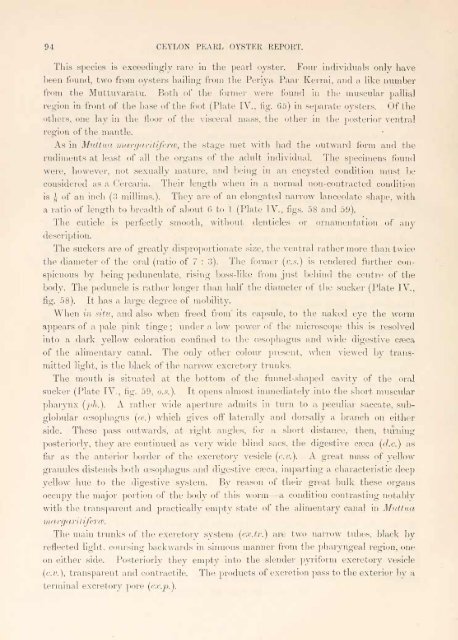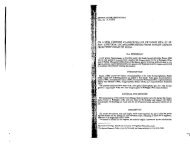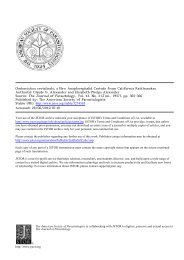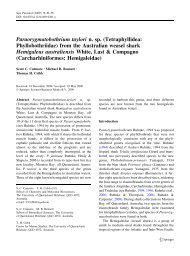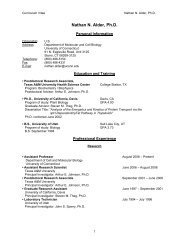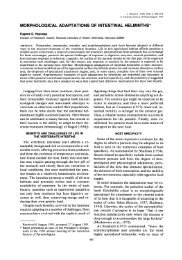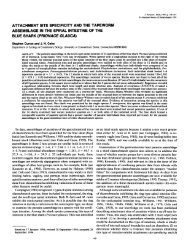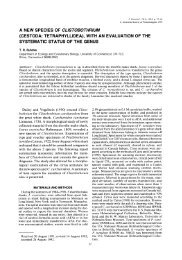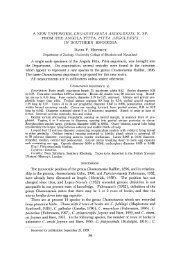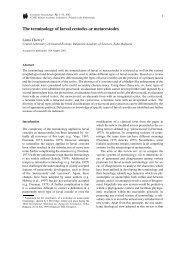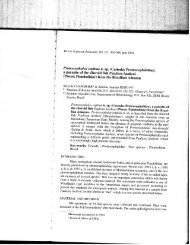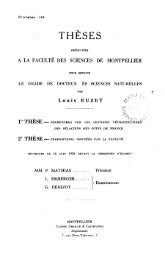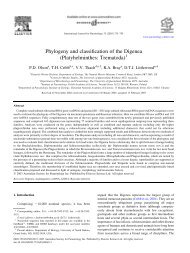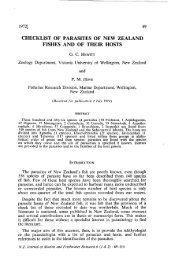PEARL OYSTER FISHERIES MARINE BIOLOGY OF CEYLON,
PEARL OYSTER FISHERIES MARINE BIOLOGY OF CEYLON,
PEARL OYSTER FISHERIES MARINE BIOLOGY OF CEYLON,
You also want an ePaper? Increase the reach of your titles
YUMPU automatically turns print PDFs into web optimized ePapers that Google loves.
94 <strong>CEYLON</strong> PEAEL <strong>OYSTER</strong> REPORT.This species is exceedingly rare in the pearl oyster.Four individuals only havebeen found, two from oysters hailing from the PeriyaPaar Kerrai, and a like numberfrom the Muttuvaratu. Both of the former were found in the muscular pallialregion in front of the base of the foot (Plate IV., fig. 65) in separate oysters. Of theothers, one layin the floor of the visceral mass, the other in the posterior ventralregion of the mantle.As in Muttua iiiiirijiiritifcrce,the stage met with bad the outward form and therudiments at least of all the organs of the adult individual. The specimens foundwere, however, not sexually mature, and being in an encysted condition must beconsidered as a Cercaria. Their length when in a normal non-contracted conditionis |-of an inch (3 millims.). They are of an elongated narrow lanceolate shape, witha ratio of length to breadth of about C> to I(Plate IV., figs.58 and 59).The cuticle isperfectly smooth, without denticles or ornamentation of anydescription.The slickers are of greatly disproportionate size, the ventral rather more than twicethe diameter of the oral (ratio of 7 :3).The former (v.s.)is rendered further conspicuousby being pedunculate, rising boss-like from justbehind the centre of thebody. The peduncle is rather longer than half the diameter of the sucker (Plate IV.,fig. 58). It has a large degree of mobility.When in situ, and also when freed from" its capsule, to the naked eyethe wormappears of a pale pink tinge ; under a low power of the microscope this is resolvedinto a dark yellow coloration confined to the oesophagus and wide digestive csecaof the alimentary canal. The only other colour present, when viewed by transmittedlight,isthe black of the narrow excretory trunks.The mouth is situated at the bottom of the funnel-shaped cavity of the oralsucker (Plate IV., fig. 59, o.s.). It opens almost immediatelyinto the short muscularpharynx (/>/>.).A rather wide aperture admits in turn to a peculiar saccate, subglobular(esophagus (a 7 .)which gives off laterallyand dorsally a branch on eitherside. These pass outwards, at right angles,for a short distance, then, turningposteriorly, they are continued as very wide blind sacs, the digestive caeca (d.c.) asfar as the anterior bolder of the excretory vesicle (c.v.).A great mass of yellowgranules distends both oesophagus and digestive caeca, imparting a characteristic deepyellow hue to the digestive system. By reason of their great bulk these organsoccupy the major portion of the body of this worm a condition contrasting notablywith the transparent and practically empty state of the alimentary canal in Muttuamargariiifei ce.The main trunks of the excretory system (ex.tr.) are two narrow tubes, black byreflected light, coursing backwards in sinuous manner from the pharyngeal region, oneon eitherside.Posteriorly they empty into the slender pyriform excretory vesicle(e.r. ), transparent and contractile. The products of excretion pass to the exterior by aterminal excretory pore (ex.pX


